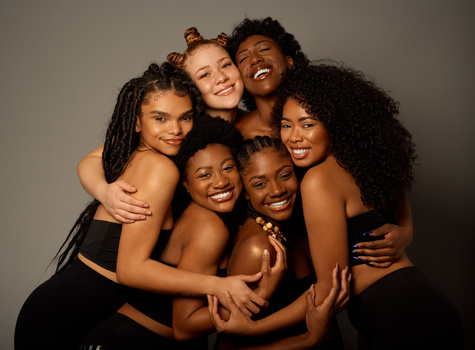
For centuries, Black women have been experimenting with chemicals and ingredients to style their hair.
There are many different hairstyles that are popular in the Black community that are creative and essential to the growth of kinky hair types.
There are ongoing myths about Black hair such as it does not grow, it is not “tamable” and it is not deemed professional in its natural state.
Regardless, Black women have taken the initiative to control how the world perceives their hair.
Hair styling is not simply for expressing creativity; it is a method of protection from excessive manipulation and the forces of nature.
According to Andre Walker’s hair type system, type 3 hair is a loose curl texture and type 4 hair is a kinky zig-zag texture.
These hair types are more prone to breakage because less sebum is produced from the scalp, which coats the strand and prevents it from drying out.
Protective styling is an exceptional way to encourage length retention, retain moisture and maintain a stretched state for easier styling.
Brooke Dixon, a Lively Tech cosmetology student and owner of Robin’s Hands, believes that protective styling is an ancient tradition that has developed in amazing ways.
“In African cultures braids were a symbol or representation of rank, marital status and showed one’s overall status in the community. Hair has always been important to Black people because it is deeper than just styling,” Dixon said.
Natural hair was not deemed professional or conventionally attractive until the 2010s, when the “big chop era” began. Embracing one’s natural hair texture and abandoning the harsh chemicals found in relaxers became a new trend and the start of the natural hair revolution.
A 2020 University of Michigan study found about 80% of Black women say they change their hair from its natural state because they consider it essential to social and economic success.
I’Yunni Phillips, a leasing manager and TCC student, said that protective styles have always been a part of her life because of her hair texture.
“The style does exactly what the name says, protect your hair. Many girls struggle with finding a way for their style to look appealing, and that is where our creativity comes into play. We take an unconventional style and own it,” she said.
Protective styles are ideal for the person who is on the go and lives a busy life filled with tasks and to-do lists.
“I prefer protective styles because I am a busy person, and I do not have much time to tend to my hair. Protective styles really benefit me because it is easy, I do not have to worry about what my hair looks like on a day-to-day basis,” Phillips added.
From braids to Bantu knots or two strand twists, the options are endless when it comes to selecting the perfect style for you. The benefits aid in the overall wellness of one’s hair depending on the maintenance of the style.
Jeanne Joseph, a hair stylist and TCC student, thinks that protective styles are great if the natural hair is being taken care of properly.
“I do think protective styles can lead to growth for kinkier hair types. However, if the hair underneath the style is not being taken care of it defeats the purpose. The proper maintenance includes washing your hair consistently and moisturizing the hair aside from oiling the scalp. When I follow these steps to promote hair growth then I do notice a difference,”
Protective styles can be a form of self-expression and provide your hair with the defense it needs to grow healthy and strong. The question is: Which one will you try next?